If you own a cat, you probably never get bored. Looking at them pouncing, bouncing, stalking, and purring is a source of entertainment right there. And if we have to name a few things the internet is obsessed with, it has to be our beloved feline friends and the never-ending supply of fun facts. So what if we combine these two?
Figgy The Feline is a TikTok account dedicated purr-ely to two fluffy goofballs, Figgy and Juliet. With their informative clips, they’re teaching more than 233.1K followers lesser-known tidbits about them and their mysterious logic.
So if you’re looking for some cool and interesting facts to share with your fellow cat-loving friends, we’ve got you covered. Keep scrolling, upvote the ones you didn’t know about, and share your thoughts in the comments below! Psst! If you consider yourself a true feline fan, be sure to check out our most recent posts about them right here and here.
@figgythefeline We do love a good cat fact #DidYouKnow #fyp #viral #catsoftiktok ♬ Because of You – Ne-Yo
#1
Cats have an extra organ. It’s called the vomeronasal organ and it allows them to “taste” air particles. (Has your cat ever stared at you with their mouth open? They are using that organ.)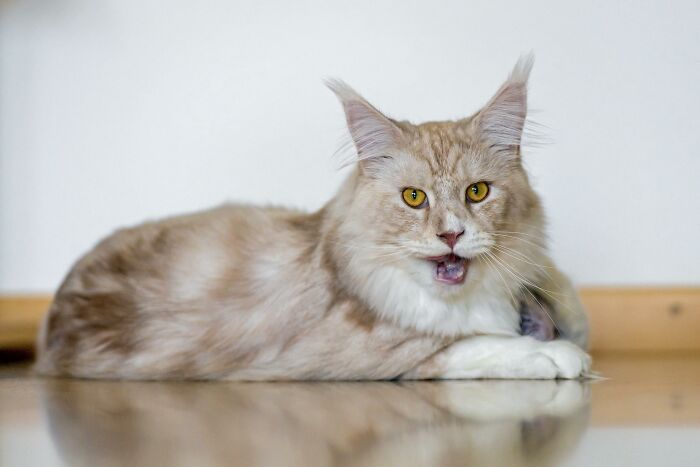
Image credits: figgythefeline
#2
When cats slowly blink at you, they’re basically saying “I LOVE YOU”. In the wild, cats slow blink with each other as a way to show trust.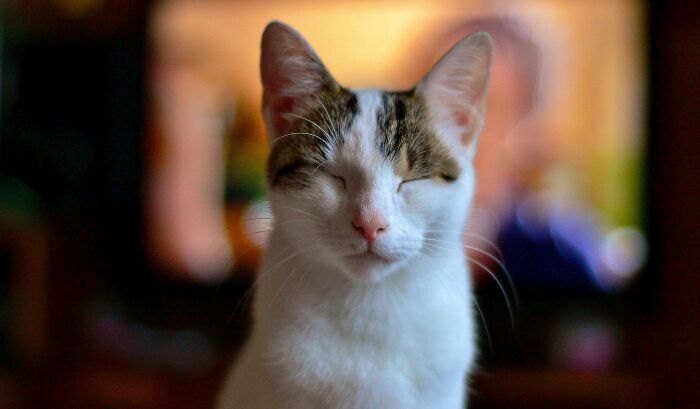
Image credits: figgythefeline
#3
Cats often carry the parasite Toxoplasma gondii, which causes rats to be attracted to cats. T. gondii makes its way to the rodent’s brain, and stops the natural fear response to cats. They seek them out, leading to their death and the cats’ meal.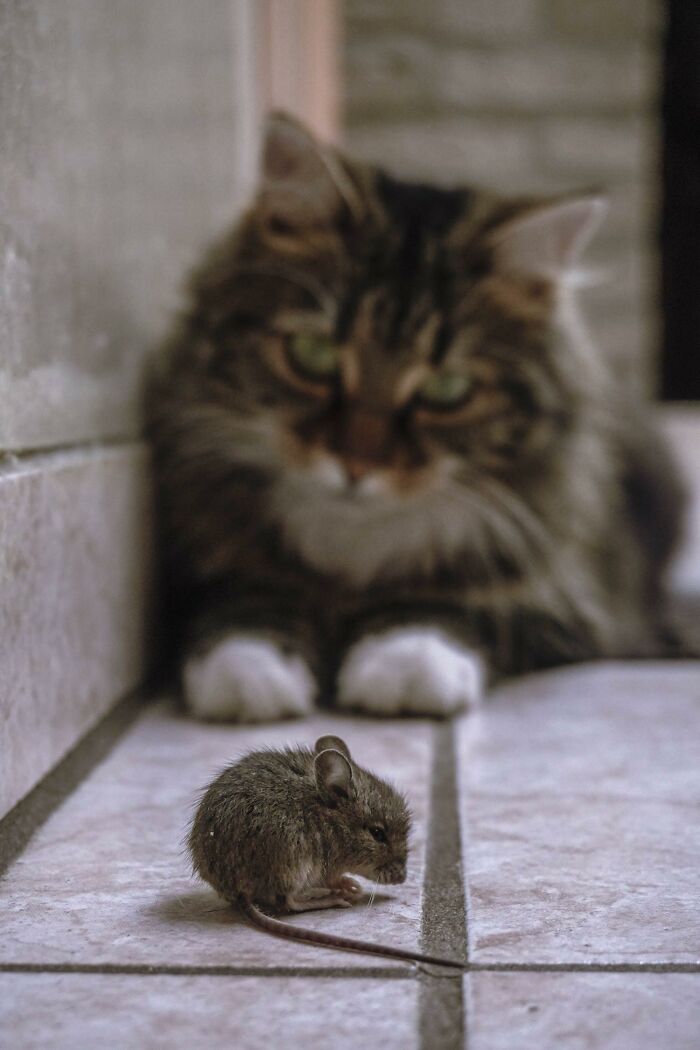
Image credits: figgythefeline
#4
About 40% of cats are either right or left “pawed” just like humans.
Males are more likely to be left pawed, females are more likely to be right pawed.
Image credits: figgythefelin
#5
A house cat is over 95% tiger (genetically).
They have many of the same behaviors, like play hunting, scent marking, and pouncing.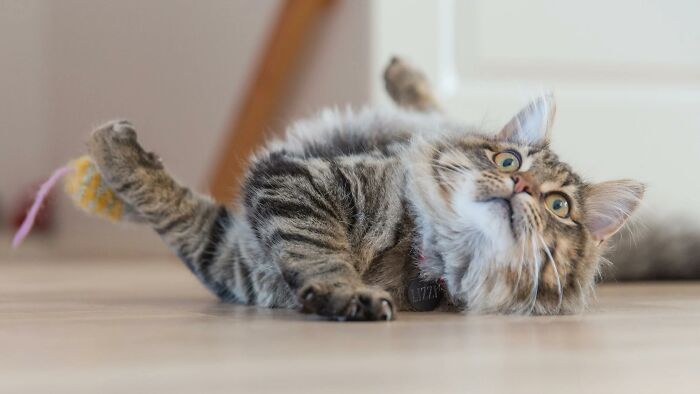
Image credits: figgythefeline
#6
A cat’s nose has a unique “print” like a human fingerprint. No two cats have identical nose prints (even litter mates have unique prints)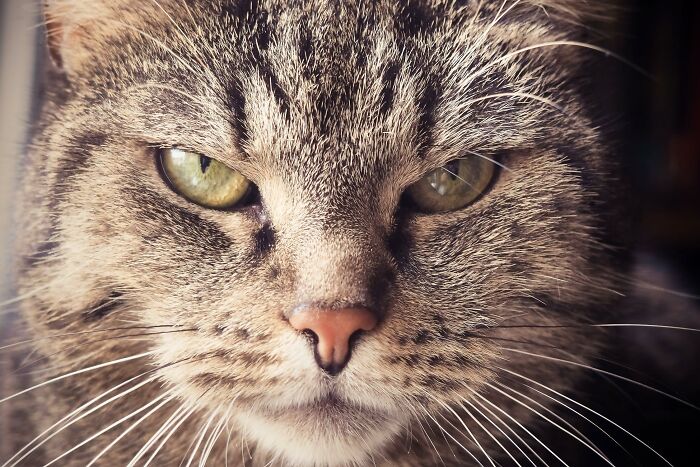
Image credits: figgythefeline
#7
Ancient Egyptians would shave their eyebrows when their cats died. It was a sign of mourning. They would mourn the loss of the cat until the eyebrows grew back. Cats were worshiped in ancient Egypt. They were believed to be magic beings.
Image credits: figgythefeline
#8
Cats sometimes yawn to end confrontation with another animal. It is basically their way of saying “whatever, not worth my time”. Cats are so sassy.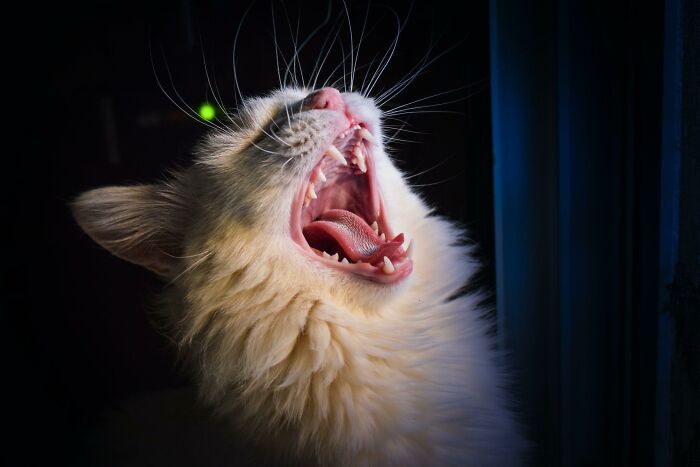
Image credits: figgythefeline
#9
Cats groom themselves for about 1/3 of their waking hours. That adds up to about 730 full days of their life!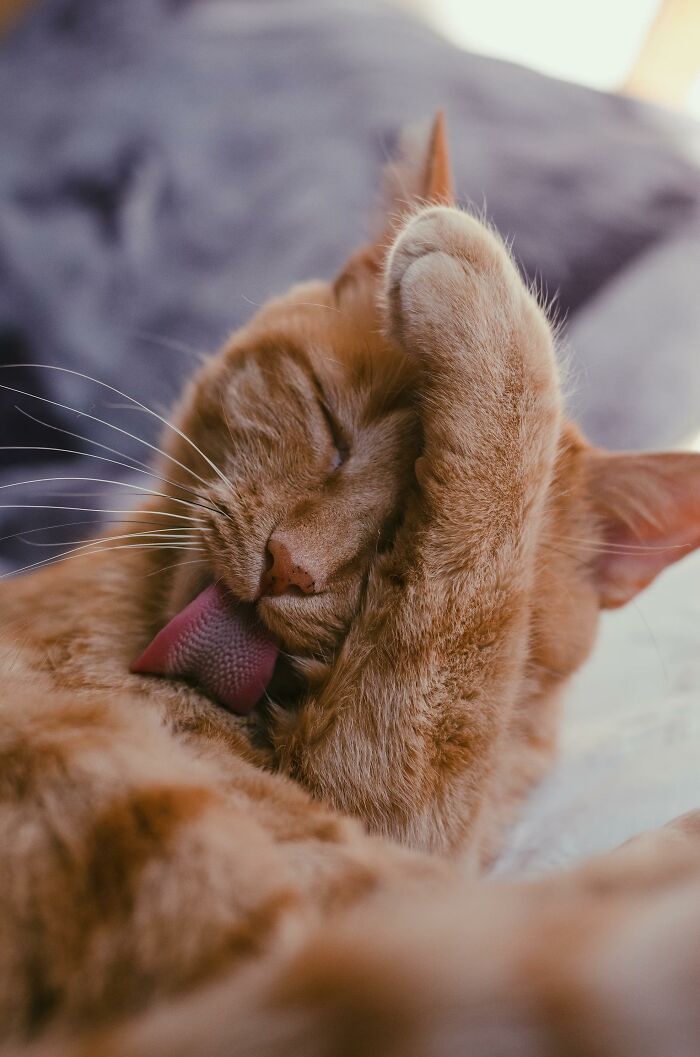
Image credits: figgythefeline
#10
Cats walk in a unique way. They move both right feet first and then both of their left feet. The only other mammals that walk this way are camels and giraffes.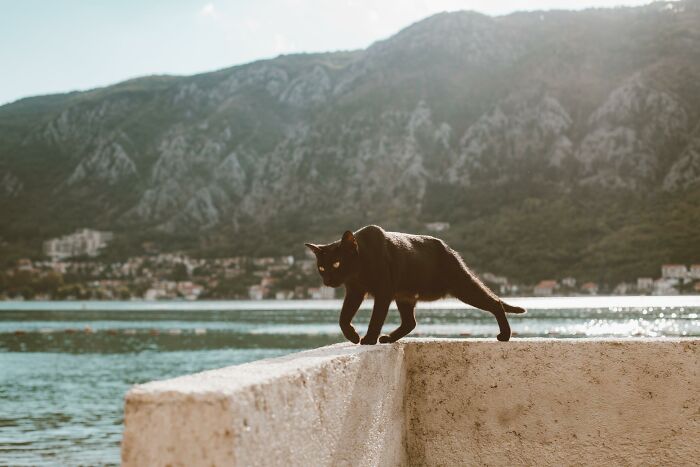
Image credits: figgythefeline
#11
Cats can dream. They are probably dreaming about hunting, according to scientists. Cats also have nightmares about bad experiences.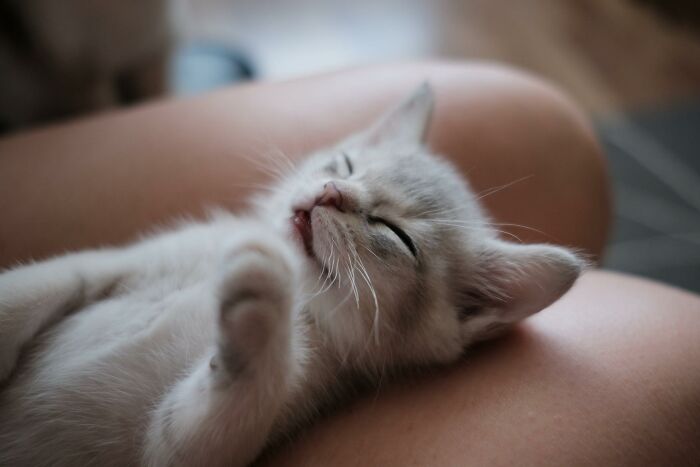
Image credits: figgythefeline
#12
There is a train station in Japan that employs cats as stationmasters.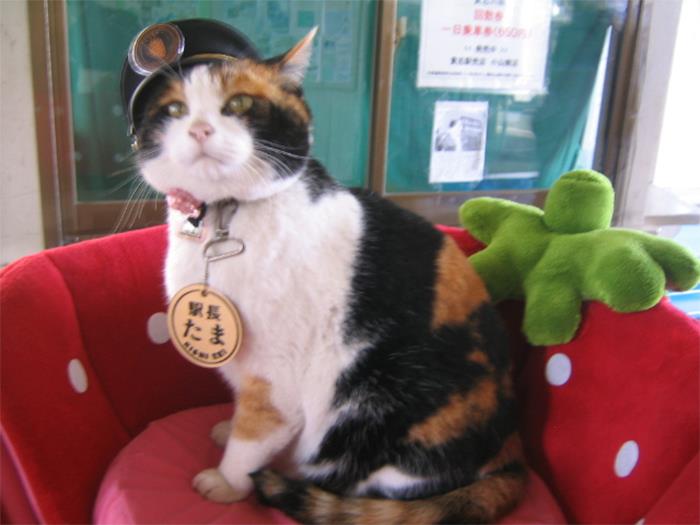
Image credits: figgythefeline
#13
Cats instinctively prefer to drink running water. In the wild, cats avoid stagnant water because it is likely to be contaminated.
#14
Cats can be allergic to humans. It is uncommon since humans bathe often, but symptoms include sneezing, itchy eyes, and rashes (just like a human with cat allergies).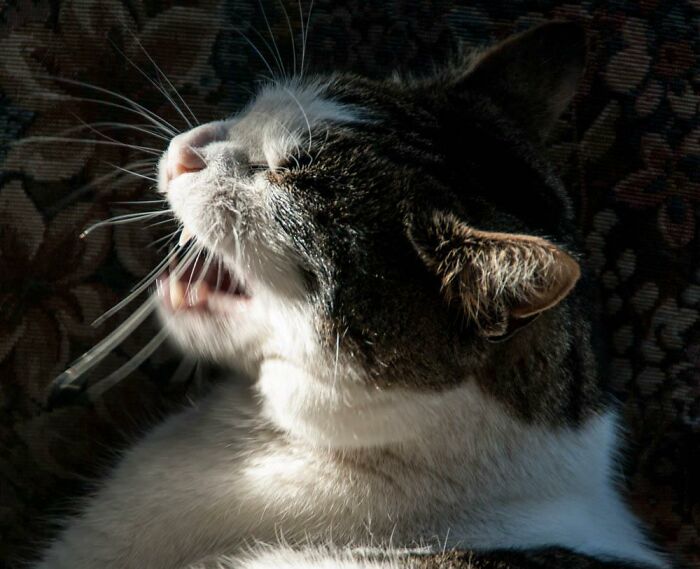
Image credits: figgythefeline
#15
Studies suggest that cat owners are healthier than dog owners. Cat owners have been found to be less likely to have a heart attack or stroke, likely because of cats’ calming effects.
#16
Cats are responsible for the extinction of at least 63 animal species. This has landed them a spot on the “100 worst invasive species” list.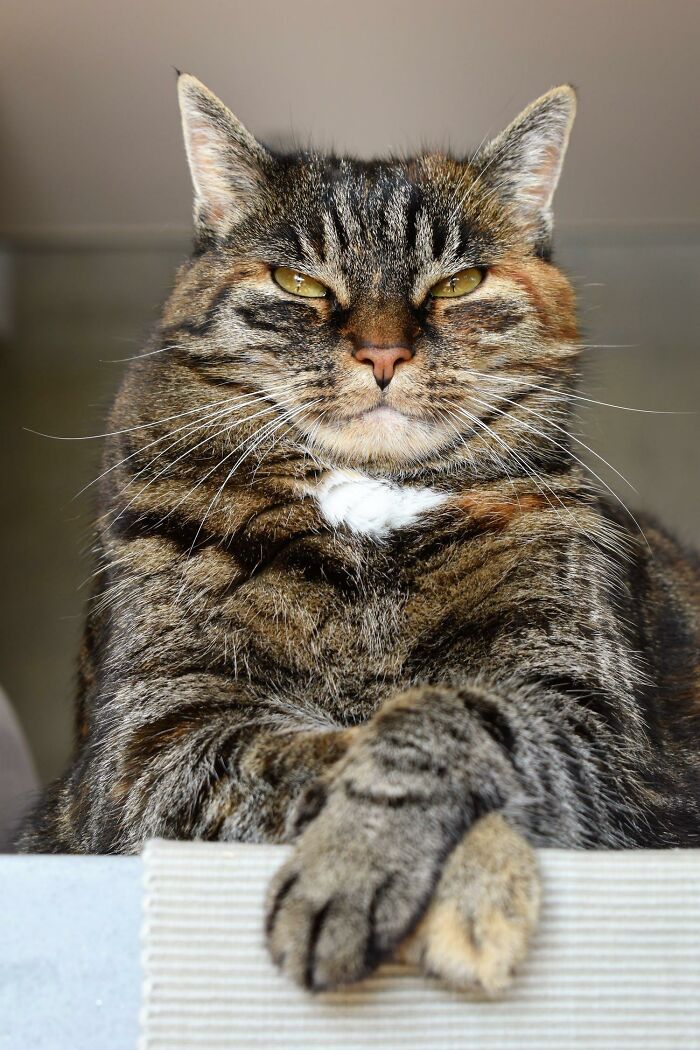
Image credits: figgythefeline
#17
Cats developed a special type of meow in order to get their way with humans. The “irresistible” sound is a combo of purring and meowing. The sound frequency is similar to an infant crying, and our brain struggles to ignore it.
#18
Cats can develop depression (usually caused by external stressors). Some symptoms include loss of appetite, reduced energy levels, and changes in litter box usage.
#19
Cat whiskers are WAY MORE than just cute.
They pick up vibrations that help cats navigate their environment and determine spaces they can fit through (they are about the same width as their body).
Trimming a cat’s whiskers causes them to become very disoriented.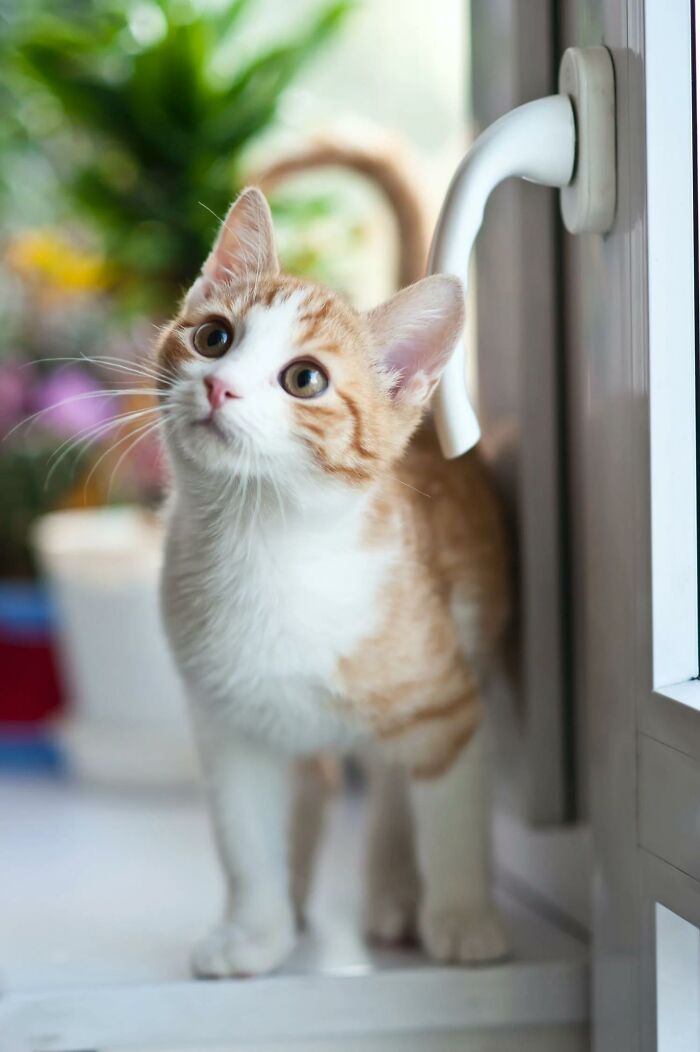
Image credits: figgythefeline
#20
Cats spend roughly 2/3 of their day sleeping. This means that a 3 year old cat has only been awake for about 1 year of its life.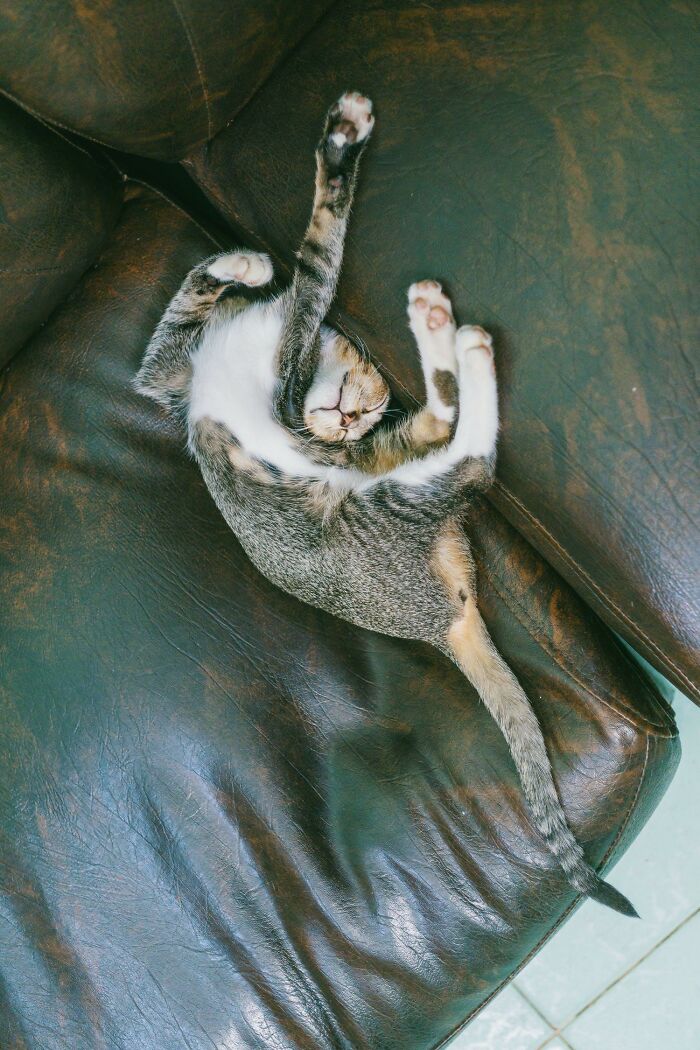
Image credits: figgythefeline
#21
Cats have belly buttons. They are very small and flat, and located about 2/3 of the way down their belly.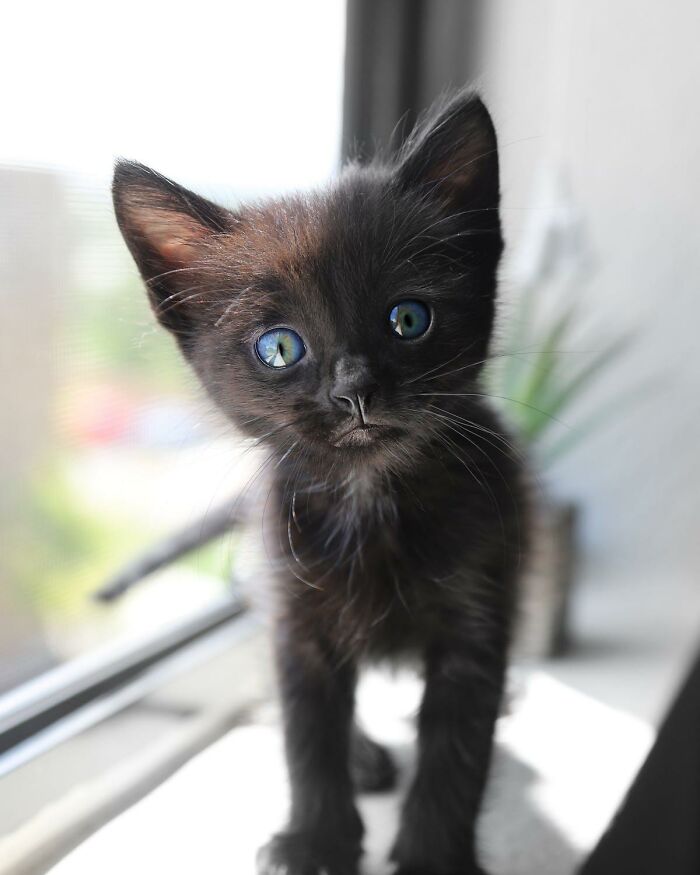
Image credits: figgythefeline
#22
A cat in Italy has more money than most humans ever will. Tommaso the cat was left an inheritance of 10 million Euros by his late humans.
#23
Cats can find their way home even if they have traveled many miles. Scientists don’t know how they do it. Some believe they can sense the earth’s magnetic field, others believe they use their strong senses.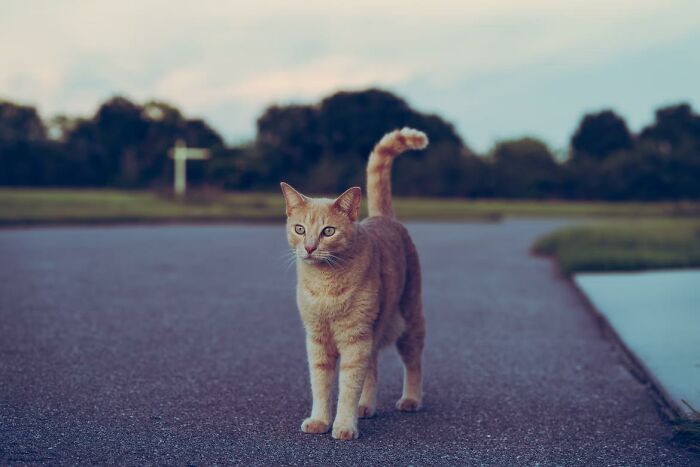
Image credits: figgythefeline
#24
Most houseplants are toxic to cats.
Keeping plants out of kitty’s reach will keep them safe!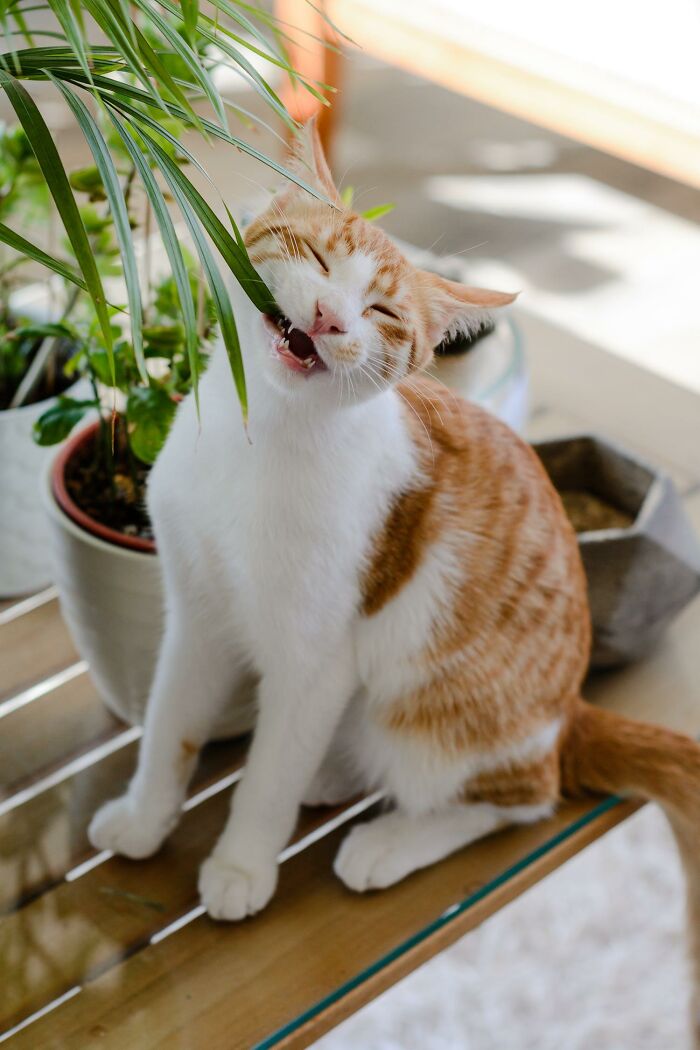
Image credits: figgythefeline
#25
Cats are considered “obligate carnivores,” Dogs are “facultative carnivores”. Obligate carnivores MUST eat meat to thrive, facultative carnivores need meat but are able to survive on some non-meats. (Cats should never be on a vegan/vegetarian diet.)
#26
Cats domesticated themselves!
Cats chose to stick around humans because they hunted the rodents that their crops attracted.
#27
Cats can get acne. It is fairly common and is usually on the chin.
Image credits: figgythefeline
#28
Cats actively choose to ignore us sometimes. Studies suggest that cats often hear us call for them but decide to ignore us. They believe it is because they were not bred to listen to humans, like dogs.
#29
Cats have whiskers on their legs. Cats cannot see very well up close, so they use those whiskers to “see” prey under their paws.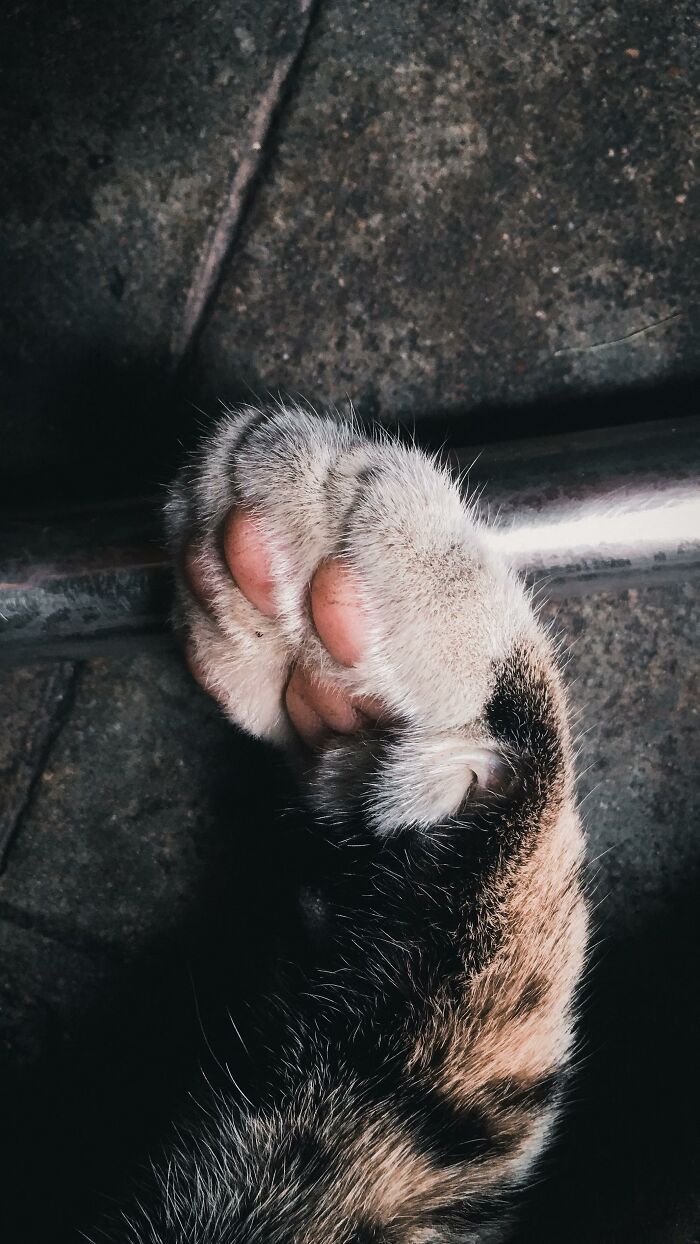
Image credits: figgythefeline
#30
Does your cat ever lick you? Congrats, they are in love. Grooming others is very important in the social world of a cat.
#31
A group of cats is called a CLOWDER.
A group of wild cats is called a DESTRUCTION.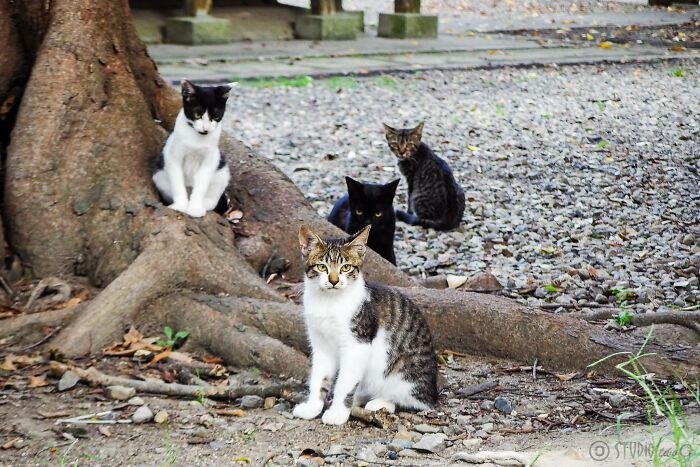
Image credits: figgythefeline/
#32
There is a breed of a cat that looks like a werewolf. It is called the Lykoi and is majestic.
#33
About 80% of orange cats are male. Fur color is determined by the X chromosome. Females need the orange gene in both of their chromosomes; males only need one.
#34
Guinness World Records no longer records “fattest cat”. There was (valid) concern that cat owners would intentionally overfeed to get the record.
#35
(Most) cats cannot digest cow’s milk. The origin of the myth is unknown; but likely started from farmers trying to attract barn cats to them with cow’s milk.
#36
Your cat doesn’t like the music you listen to. Scientists have created a species-specific music genre for cats to enjoy. It mimics their natural communication style.
#37
Cats can turn their ears 180 degrees using their 32 ear muscles.
#38
Your cat tries to sleep/play on your desk with you because thay are trying to copy you. This is called mirroring.
#39
Cats communicate with their whiskers. Whiskers that are still usually mean relaxed, forward usually means curious, and back usually means upset.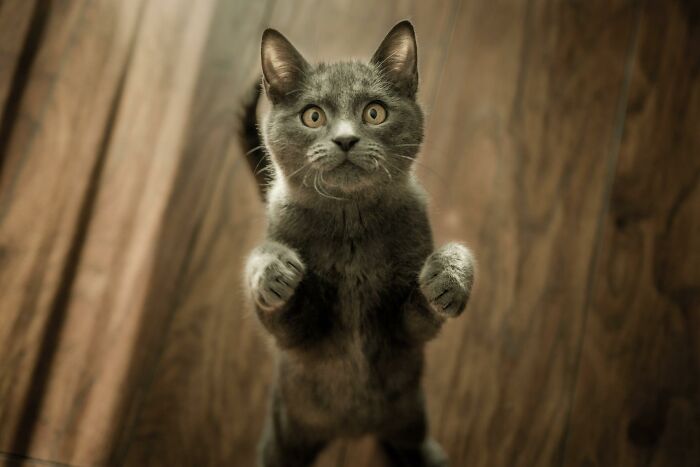
Image credits: figgythefeline
#40
The first (known) cat video was filmed in 1894. The video is called “Boxing Cats” from Thomas Edison’s Black Maria Studio. Humans have been enjoying cat videos for over 120 years.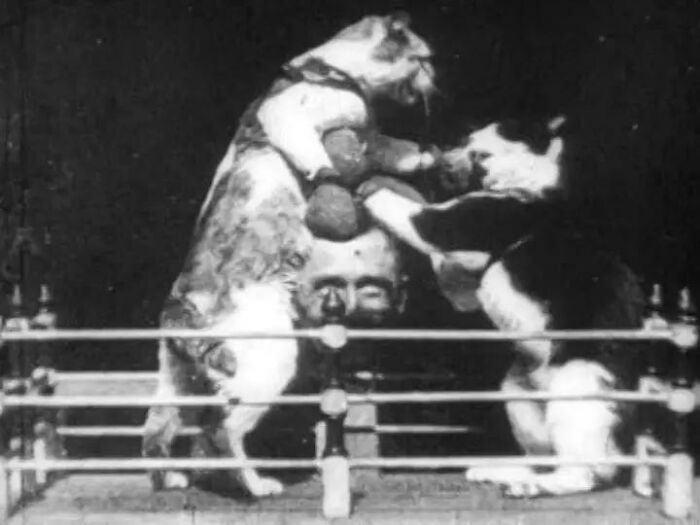
Image credits: figgythefeline
#41
Your cat basically thinks you are a large, clumsy kitten. Cats’ interactions with humans resemble their mother/kitten relationships.
#42
Cats can become addicted to tuna. Veterinarians refer to them as “tuna junkies” because they refuse anything other than tuna. Tuna is fine in moderation, but true tuna junkies are at risk for malnutrition.
#43
A cat’s purr can have multiple meanings.
Purring can mean your cat is happy, injured, nervous, or hungry.
#44
Neutering your cat can increase his life expectancy by 62%. Spaying your female cat can increase her life expectancy by 39%.
#45
Cats get the “zoomies” from built up energy. They are like a wind-up toy: once energy is built up, they must let it out.
#46
Cats cannot see directly under their nose and chin, and have poor up-close vision. They make up for the blind spot by using the whiskers on their face and legs to detect even the smallest movements.
#47
Black cats and dogs are the least likely to be adopted. Unfortunately, they are also surrendered to shelters at a higher rate, according to the ASPCA.
#48
The furry bits inside of a cat’s ear are called “ear furnishings”. They help to pick up on vibrations and keep out debris.
#49
Your cat might be mad at you right now. If your feline is staring at you from across the room… Beware.
#50
99.9% of all calico cats (cats with 3 different fur colors) are female. Fur color is determined by the X chromosome. A male cat can be a calico in rare cases when he inherits an extra X chromosome.
#51
Cats with white fur and blue eyes are often deaf. Studies show that up to 85% of white cats with both blue eyes are deaf (40% of white cats with one blue eye are deaf). The “blue eyed gene” and the “deafness gene” are closely related.
#52
There are between 37 and 42 feline species. Some lesser-known species are the caracal, Pallas’s cat, jaguarundi, and the fishing cat.
#53
Lilies are EXTREMELY toxic to cats. Every part of the flower, including the water in the vase, can quickly cause kidney damage. If you think you cat may have ingested/licked any part of a lily plant, get them to the vet immediately.
#54
Cats do not like their water being located near their food. In the wild, cats do not drink water near their food (dead animals) because it could be contaminated. This instinct is present in house cats.
#55
Cats scratch for more reasons than just sharpening claws. Scratching allows them to stretch, mark their scent, and alert other cats of their presence.
#56
Decorating for the holidays? Poinsettias are toxic to cats. They can cause vomiting, diarrhea, and skin/eye irritation in felines.
#57
The most popular cat name of 2020 is Oliver. Bella and Simba came in second and third place.
#58
The higher the fall, the more likely a cat is to survive it. Cats are able to reach terminal velocity during a high fall, allowing them to adjust their bodies to prepare for landing.
#59
Cats cannot move their jaw side to side like a human can.
#60
Cats have a reflective layer in their eyes called the tapetum lucidum. The layer is reflective like a mirror, helping cats to see in the dark and causing the “eyeshine” effect.
#61
Cats can become ill due to changes in their environment/routine. Cats love routine. Something as small as changing their litter brand can cause vomiting, refusal to eat, and many other symptoms.
#62
In Ancient Egypt, anyone who hurt a cat was severely punished. Ancient Egyptians worshiped cats. Anyone who injured them was often sentenced to death.
#63
It is beneficial to play with your cat right before their meal times. It tricks their brain into thinking they had a successful hunt. Doing this keeps their brain stimulated.
#64
Cat litter was invented in 1947. It was originally used to soak up oil spills. Before 1947, sand or dirt was commonly used.
#65
The Tesla logo is actually a cat’s nose.
#66
Your cat probably enjoys his alone time. In the wild, cats are solitary hunters and spend most of their time solo. This trait is present in house cats.
#67
Feral cats and stray cats are not the same. A stray cat is a cat that was a pet at one point in his life; a feral cat is born and raised in the wild. Feral cats see humans as a large animal/predator rather than a companion. They (generally) avoid human contact.
#68
Feral, unspayed cats can have litters of 3 – 7 kittens every 4 months. Those kittens have kittens. Their kittens have kittens, and so on. Spaying and neutering halts this process and prevents THOUSANDS of kittens.
#69
Cats are crepuscular, meaning they are most active at dawn and dusk . This is why your cat probably wakes you up bright and early for their food.
#70
A green cat was born in 1995. High levels of copper in nearby pipes caused discoloration.
#71
The cheetah is the only feline that can’t retract their claws. They use them as traction while running.
#72
Not all cats have a response to catnip. Only about 50% of cats experience the effects of catnip (it is genetic).
#73
A statue was built in Scotland in honor of a cat named Towser. Towser the Mouser killed 30,000 mice in her lifetime, earning her the statue.
from Bored Panda https://ift.tt/ETkhwUF
via IFTTT source site : boredpanda